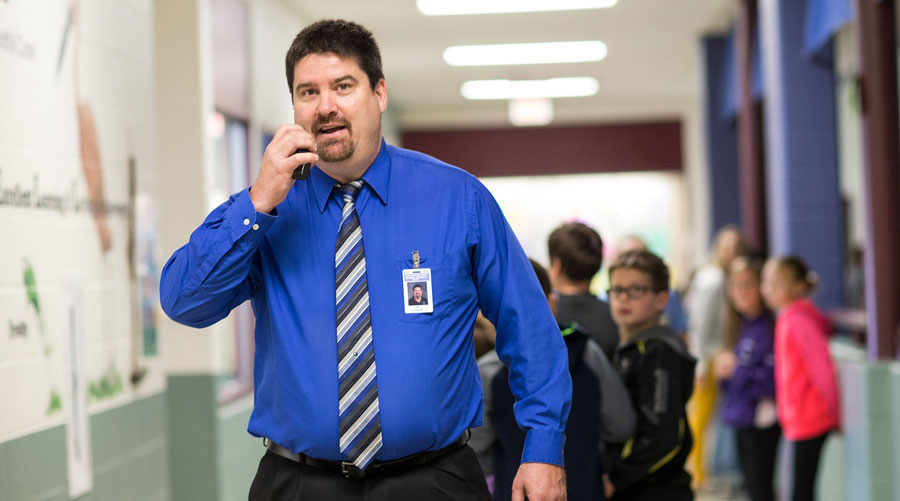Learning, playing sports, performing in the arts, participating in clubs and other social activities are some of the important aspects for about 54 million students in public and private schools.
Yet children and adolescents have experienced an increase in mental health issues, including depression, anxiety and trauma, in recent years. For example, there was an 80% rise of adolescents (ages 14–18) who reported a major depressive episode every year between 2010–2018. Superintendents, principals, teachers, nurses and other school leaders across 13,000 school districts identified student mental health as a top concern, according to various reports. Some students only receive mental health and emotional support services at their schools.
But the coronavirus pandemic has only compounded the issues and complexities surrounding student mental health.
An Existing Student Mental Health Crisis
Their time in school are transformative years for children and adolescents. It’s during this period that about 50% of all mental health conditions begin by age 14, according to the National Alliance on Mental Illness (NAMI). Common mental health conditions include anxiety and depression, with 1 in 6 youth (ages 6–17) experiencing one of these disorders every year.
Other findings from the CDC and the Pew Research Center about mental health prior to the pandemic include:
- Mental, behavioral and developmental disorders begin in early childhood, with 1 in 6 children ages 2–8 diagnosed.
- 61% of teens said they feel pressure to get good grades, while 29% struggled with their looks and 28% worried about fitting in socially.
- Suicides increased 56% among ages 10–24 from 2007 to 2018, becoming the second leading cause of death.
- School is often where children and adolescents receive mental health services and support, yet challenges remain about the social stigma of mental health and coming forward for assistance. About 50% of children and adolescents with a mental health disorder did not receive any kind of treatment.
The Role of Mental Health in School Safety
The mental health and well-being of children and adolescents is further impacted by crime, violent incidents and unprecedented events, creating far-reaching effects on students, teachers, principals, staff members and the community.
- 1 in 5 students ages 12–18 were bullied during the school year.
- 47% of public schools reported one or more incidents of violence, theft or other crimes to the police.
- 1,931 school shootings have occurred since 1970, with 639 fatalities and 1,813 injuries.
The National Threat Assessment Center (NTAC) recently analyzed 100 current or former students who planned 67 attacks on K–12 schools nationwide from 2006 to 2018. It found that these students often exhibited “observable concerning behaviors” as they moved to violence, yet there were intervention points that frequently occurred before these attacks started.
Many of these students shared their intentions beforehand through various methods, including verbal statements, online posts, videos and audio recordings, according to NTAC’s study, Averting Targeted School Violence: A U.S. Secret Service Analysis of Plots Against Schools. Out of the 67 cases, 50 planned attacks were detected because these students communicated their plans beforehand.
The study also found students who plotted school attacks shared many similarities with students who followed through with their attacks, including:
- Being bullied or having mental health issues, often involving depression and suicidal thoughts.
- Histories of school discipline and contact with law enforcement.
- The impact of adverse childhood experiences, including substance abuse in the home, violence or abuse, and parental mental health issues.
Students who plotted these attacks were also impacted by these life stressors and others. Most of these students (81%) experienced stressors in the year that led up to the discovery of their plot or were happening when it was detected.
COVID-19 and Children/Adolescents Mental Health
The challenges ensuring the mental health well-being of children and adolescents became even more difficult with the onset of COVID-19 in March 2020, which drastically upended the K–12 landscape. Experts are unsure of the long-range impact of the pandemic on children and adolescents, though there are already indications.
- More than half of school districts at one point reported rises in mental health referrals and counseling for students.
- Emergency department visits for suspected suicide attempts were 51% higher for girls ages 12 to 17 in 2021, compared to the same period in 2019.
- Over 2.3 million youth (ages 12–18) are coping with severe major depression.
The Kaiser Family Foundation (KFF) recently conducted a survey about COVID-19’s impact on education and its effect on parents, children and adolescents.
- 4 in 10 parents of school-aged children (ages 5–17) said at least one of their children fell behind academically.
- 36% of parents said at least one of their children fell behind in social and emotional development.
- 42% of parents said their children experienced a new mental health symptom they didn’t have before the pandemic, including:
- Difficulties concentrating on schoolwork (27%)
- Nervousness or easily being scared (19%)
- Sleeping problems (18%)
Superintendents, principals, teachers and other leaders are seeing a spike in student behavioral incidents as students have returned to in-person learning. Nearly half of all school and district leaders said they’re receiving more threats of violence now than in the fall of 2019. Some of these reported incidents include:
- Nationwide threats of school violence circulated on TikTok in December 2021, with some schools closing for the day of adding police.
- About 100 people, who were either participants or spectators, were involved in a brawl at an Ohio high school.
- An early-warning system that monitors student mental health episodes recently sent over 3,100 alerts to Nevada county district officials.
COVID-19 and its toll on the existing mental health crisis among children and adolescents is so concerning that three leading pediatric organizations — the American Academy of Pediatrics, the American Academy of Child and Adolescents Psychiatry and the Children’s Hospital Association — jointly declared a national emergency.
Student Mental Health and the Coming School Year
The mental health of students will continue to be a major concern for K–12 employees, according to Rave Mobile Safety’s Crisis Communication and Safety in Education Survey. About 60% of survey respondents were much more concerned or slightly more concerned about student mental health entering the 2022–2023 school year, compared to the last academic year.
Over 400 employees across various departments, including administration, IT services and safety and security, were asked to give their perspectives about recent crisis communication challenges and plans for the coming school year.
Other survey findings about the 2022–2023 academic year included:
- 61% of survey respondents said student mental health is the top safety concern
- 50% believe they have the appropriate mental health resources to support their students
- 43% of respondents said they’re investing more in mental health resources
Critical Communication and Collaboration Platforms Help Support K–12 Mental Health and Safety
The mental health and well-being of students is a vital component to a school community’s safety. A top concern for superintendents, principals, teachers, nurses and other school staff, the mental health of their students is more so as COVID-19 continues to evolve. School leaders need to develop more ways to keep their school communities safe, informed and engaged in any setting — at school, online or some combination.
A critical communication and collaboration platform allows school leaders to know what’s happening with their school community, whether it’s checking in on a student in need or initiating an alert for a major event. This consolidated platform provides numerous tools for school leaders to quickly learn and notify key personnel about a mental health situation, while also expediting response efforts and enhancing safety measures. These tools include:
- Two-way texting empowers staff members or students to report suspicious activity or other issues discreetly. A student, for example, can report anonymously if they’re being threatened by a classmate. Administrators can communicate with the student and track the information.
- Recurring and automated health checks send messages to parents to check in about their child’s health and wellness status.
- A one-click mobile panic button application instantly connects to 9-1-1 teams, first responders and necessary personnel simultaneously. The application provides 9-1-1 telecommunicators and first responders with critical response data. It also automatically triggers mass notifications, digital signage and more.
- Internal staff communication enables authorized employees to notify the necessary personnel about minor medical incidents, administrative updates and other issues to specific groups without calling 9-1-1.
- Status checks allow administrators to collect real-time updates from staff members during an emergency. These updates help first responders and other personnel quickly identify where resources are needed the most.
- Quick alerts enable administrators to launch messages instantly to staff, students and parents from prestored templates. Messages can be sent through voice, email or text, while administrators simultaneously post outgoing messages to a school’s Twitter account and Facebook page.
- Incident management and response dashboard provides safety personnel and others the ability to monitor and manage situations in real time. They can see the type of emergency and know key location details. They will also be able to message staff and coordinate a response.
The challenges — such as academic achievements, peer pressure and school violence — children and adolescents have experienced in recent years have spiked, creating a mental health crisis. COVID-19 increased and amplified these very challenges. This has all led to the mental health of children and adolescents being declared a national emergency. For superintendents, principals, teachers, nurses and others, the mental health wellness and safety of their students is a major priority. A critical communication and collaboration platform will allow school leaders to handle, dispatch and respond to mental health incidents and/or safety situations. School leaders will have daily and critical communication, providing them with critical information about a student in need or an adverse event. They will be able to adapt to any situation that may arise on or off school grounds.





Comments are closed here.